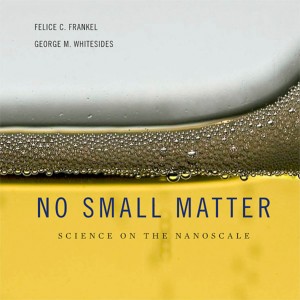Oil spills have been on my mind lately as I’ve caught some of the overage about the BP (British Petroleum) oil spill in the Gulf of Mexico. One leak (the smallest) has been fixed according to a news item on physorg.com
Days of work off the coast of Louisiana with underwater submarines nearly a mile below the surface finally bore fruit as a valve was secured over the smallest of the three leaks and the flow shut off.
The feat does not alter the overall amount of crude spilling into the sea and threatening the fragile US Gulf coast, but is significant nonetheless as the focus can now narrow on just two remaining leaks.
“Working with two leaks is going to be a lot easier than working with three leaks. Progress is being made,” US Coast Guard Petty Officer Brandon Blackwell told AFP.
More than two weeks after the Deepwater Horizon rig exploded, the full impact of the disaster is being realized as a massive slick looms off the US Gulf coast, imperilling the livelihoods of shoreline communities.
The news item goes on to detail how much crude oil is still being lost, the oil slick’s progress, the probable impact on the shoreline and animals, and the other efforts being made to ameliorate the situation.
With all the talk there is about nanotechnology’s potential for helping us to clean up these messes, there’s been no mention of it in the current efforts as Dexter Johnson over at the IEEE’s (Institute of Electrical and Electronics Engineers) Nanoclast blog pointed out the other day. From Dexter’s posting which features both a discussion about patents for nanotechnology-enabled clean up products and an interview with Tim Harper,
So to get a sense of where we really are I wanted to get the perspective of my colleague, Tim Harper (principal of Cientifica), who in addition to being a noted expert on the commercialization of nanotechnologies also has devoted his attention to the use of nanotechnologies in cleantech including its remediation capabilities, leading him to his presentation this week in Australia at the conference Cleantech Science and Solutions: mainstream and at the edge.
“If you are looking for a quick fix from nanotechnology, forget it,” says Harper. “Nanotech is already making an impact in reducing energy, and therefore oil use, it is also being used to create stronger lighter materials that can be used for pipelines, and enabling better sensors for early warning of damage, but in terms of cleaning up the mess, the contribution is minor at best.”
Clearly not the hopeful words that many would have hoped for, and the pity is that it might have been different, according to Harper.
“As with all technologies, the applications take a while to develop,” he says. “If someone had come up with some funding 10 years ago for this specific application then we may have had better tools to deal with it.”
Dexter’s posting about patents and Harper’s comments reminded me of an article by Mason Inman I saw two years ago on the New Scientist website titled, Nanotech ’tissue’ loves oil spills, hates water. From the article,
A material with remarkable oil-absorbing properties has been developed by US researchers. It could help develop high-tech “towels” able to soak up oil spills at sea faster, protecting wildlife and human health.
Almost 200,000 tonnes of oil have been spilled at sea in accidents since the start of the decade, according to the International Tanker Owners Pollution Federation. [This article was posted May 30, 2008]
Clean-up methods have improved in recent years, but separating oil from thousands of gallons of water is still difficult and perhaps the biggest barrier to faster clean ups.
The new water-repellent material is based on manganese oxide nanowires and could provide a blueprint for a new generation of oil-spill cleaners. It is able to absorb up to 20 times its own weight in oil, without sucking up a drop of water.
Unfortunately,
But [Joerg] Lahann [University of Michigan in Ann Arbor, US] points out that manganese oxide may not be the best material for real-world applications because it could be toxic. He says, though, that the new material “clearly provides a blueprint that can guide the design of future nanomaterials for environmental applications.”
I wonder if they’ve done any research to determine if manganese oxide in the shape and size required to create this nanotech ’tissue’ is toxic. Intriguingly, there was a recent news item on Nanowerk about toxicology research in a marine environment being undertaken.
Led by Dr. Emilien Pelletier, the Institut des Sciences de la Mer de Rimouski at the Université du Québec à Rimouski has obtained an LVEM5 benchtop electron microscope to help them study the short-term and long-term effects of nano-materials on the marine environment.
Dr. Pelletier is the Canada Research Chair in Marine Ecotoxicology. The overall objective of the chair is to understand the impact of natural and anthropogenic stresses on the short-and long-term high-latitude coastal ecosystems to contribute to the conservation, protection and sustainable development of cold coastal marine resources.
Since the news release was written by the company supplying the microscope there is no word as to exactly what Emilien’s team will be researching and how the work might have an impact on other members of the community such as the researchers with the ‘oil-hungry nanotech tissue’ made of nanoscale manganese oxide.
There is as always a political element to all of this discussion about what we could or couldn’t do with nanotechnology-enabled means to clean up oil spills and/or reduce/eliminate our dependence on oil. This discussion is not new as Dr. J. Storrs Hall implies during a presentation being reported in a recent (May 4, 2010) Foresight Institute blog entry by Dave Cronz, PhD. From the posting,
Here I offer my reflections on some of the highlights of the presentation by Dr. J. Storrs Hall of the Foresight Institute, entitled “Feynman’s Pathway to Nanomanufacturing,” and the panel discussion that followed, “How Do We Get There from Here?” Discussions such as these are crucial opportunities to reflect on – and potentially shape – emerging technologies whose destinies are often left to be determined by “market forces.”
Dr. Hall began with an intriguing argument: Feynman’s top-down approach to reaching the nano scale in manufacturing, achieved through a step-down method of replicating and miniaturizing an entire, fully-equipped machine shop in 1:4 scale over and over would yield countless benefits to science, engineering, and manufacturing at each step. These microscopic, tele-manipulated master-slave “Waldos” (named after Heinlein’s 1942 story “Waldo F. Jones”) would get nanotechnology back on track by focusing on machines and manufacturing, since most of our current emphasis is on science at the nano scale. Feynman’s top-down approach to nanoscale manufacturing is missing from the Foresight Institute’s roadmap, according to Hall, “for political reasons.” This raises a fundamental point: science and technology cannot develop independent of the political and social spheres, which pose as many challenges as the technology. Many would argue that social and technological processes are inseparable and treating them otherwise borders on folly. I commend Dr. Hall for offering his argument. It soon became clear that the panelists who joined him after his presentation disagreed. [bolded emphases mine]
…
As Dr. Hall aptly noted it’s not dispassionate calculations but “serendipity: the way science always works.”
I’m in agreement with Dr. Hall, the political and social spheres are inseparable from the scientific and technological spheres. As for “emerging technologies whose destinies are often left to be determined by market forces”, Dexter’s posting ends with this,
But foresight is not the strong suit of businesses built around short-term profit motives as evidenced by them [BP] not even investing in the remote systems that would have turned the oil well off and possibly avoided the entire problem.
I strongly recommend reading Dexter’s posting to get the nuances and to explore his links.
I’m going to finish on a faint note of hope. There is work being done on site remediation and it seems to be successful, i.e., nonpolluting, less disruptive to the environment, and cheaper. The Project on Emerging Nanotechnologies (PEN) has a webcast of a presentation titled, Contaminated Site Remediation: Are Nanomaterials the Answer?. You can find my comments about the webcast here (scoll down a bit) and PEN’s Nanoremediation Map which lists projects around the world although most are in the US. It’s incomplete since there is no requirement to report a nanoremediation site to PEN but it does give you an idea of what’s going on. Canada has two sites on the map.

